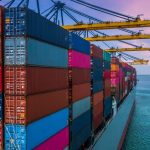Marco Bognolo, Vice President Basic Design, Fincantieri Merchant Ship Business Unit
Marco Bognolo is the Vice President of Basic Design in Fincantieri’s Merchant Ship Business Unit. He has spent the last decade directing the technical specification of the design prototypes for passenger vessels developed by the group, thanks to his extensive experience in all areas of the technical department, project management, and as senior designer for cruise ships.
Mr Bognolo, Fincantieri is looking at a full order book. What is this success attributable to?
The first answer is diversification. Fincantieri does not rely solely on cruise ships; we have expanded into naval ships, the offshore sector and, more recently, land-based engineering, like bridges or the terminal in Miami. Today Fincantieri is a highly diversified engineering company. This enables us to adapt to a very volatile environment, which is key to survival.
A brief overview of Fincantieri’s current new building projects under DNV class.
Fincanteiri states “We are currently building two ultra-eco-friendly cruise vessels to DNV class for TUI Cruises, a joint venture between TUI AG and Royal Caribbean Cruises, which are scheduled for delivery in 2024 and 2026, respectively. These 160,000 GT (gross tonnage) LNG-fueled ships represent an innovative concept developed by us to minimize fuel consumption and environmental impact while offering an outstanding cruise experience. In addition, Four Seasons Yachts have ordered a 95-suite luxury cruise yacht to DNV class. It combines a dual-fuel MGO/methanol propulsion system and fuel cells and will have an ultra-low carbon footprint once green fuels are available. It will be delivered in 2025.”
The emissions generated in shipbuilding depend on the kind of material being manufactured. They analyze the materials in detail and identify areas where they could use more beneficial configurations to reduce the emissions within scope 3 upstream but also scope 1 and 2. On the other hand, we cannot change the fact that ships are mostly made of steel. Metal production has unavoidable intrinsic emissions. All we can do is buy as much steel as possible from companies that compensate for their emissions. The situation is like other materials. Fincantieri Merchant Ship Business Unit has developed a model to precisely calculate the emissions for each material used. “Interestingly, when we look at the entire life cycle of a cruise ship, only 4 to 5 percent of the lifetime emissions are attributable to construction. Ninety-five to ninety-six percent of the emissions are downstream. So, while it is important to look at the upstream part, most of our efforts are concentrated on reducing downstream emissions” says Ficanteiri.
Source: Hellenic Shipping News



